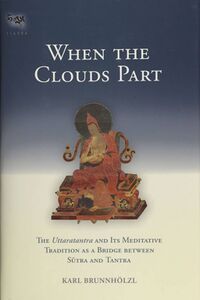Zhang ston Bsod nams grags pa’s Defense of Dol po pa’s Clear-Cut Distinction between Buddha Nature and the Ground Consciousness
Mathes, Klaus-Dieter. “Zhang ston Bsod nams grags pa’s Defense of Dol po pa’s Clear-Cut Distinction between Buddha Nature and the Ground Consciousness.” Paper presented at the University of Vienna Symposium, Tathāgatagarbha Across Asia, Vienna, Austria, July 2019. Video, 40:48.
https://www.youtube.com/watch?v=K-ALrY63cho.; People/'gos lo tsA ba gzhon nu dpal, Key Terms/trisvabhāva, Key Terms/pariniṣpannasvabhāva, Key Terms/paratantrasvabhāva, Key Terms/parikalpitasvabhāva, Key Terms/Jonang, Texts/Laṅkāvatārasūtra, Texts/Śrīmālādevīsūtra, People/Karmapa, 3rd, Texts/Tathāgatagarbhasūtra, Texts/Anūnatvāpūrṇatvanirdeśaparivarta, People/Dol po pa, Texts/Mahāyānottaratantraśāstropadeśa, Texts/Ratnagotravibhāgavyākhyā, Key Terms/ālayavijñāna, Key Terms/Yogācāra, People/Zhang ston bsod nams grags pa, Key Terms/gzhan stong, Texts/Ratnagotravibhāga Mahāyānottaratantraśāstra






